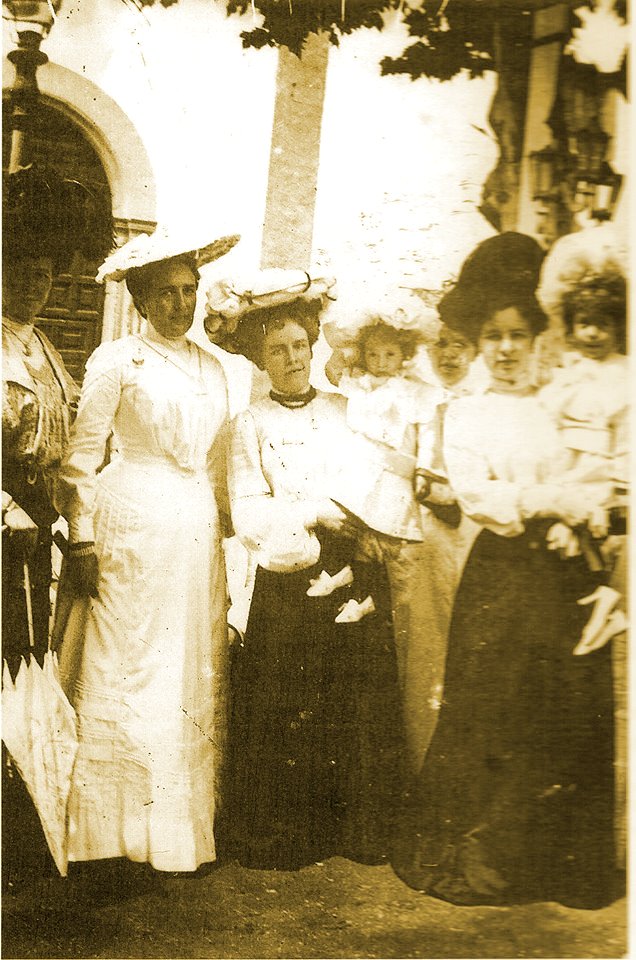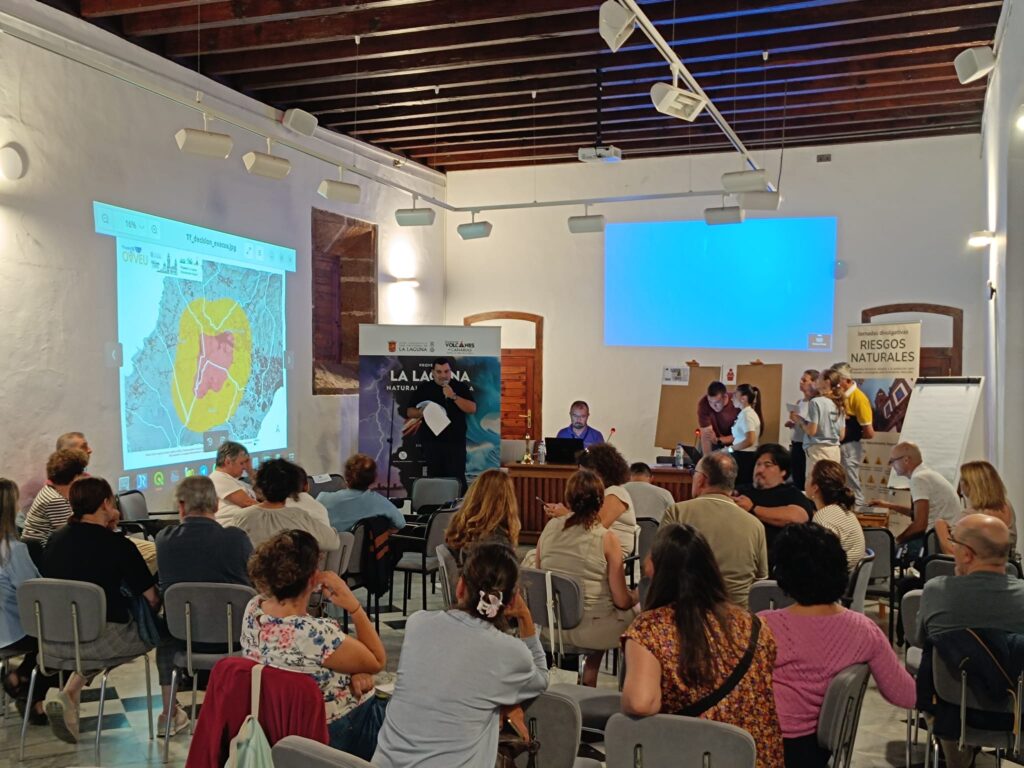
Fiestas de San Miguel in the Plaza del Adelantado or Alameda del Adelanta, with the door of Las Catalinas in the background, photo taken in the early 20th century.
La Laguna, now bustling with summer visitors, comes alive each year. The atmosphere shifts from its customary melancholia; the town casts off its lazy, matronly slumber, reminiscing about past glories. The streets buzz with noise, and the expansive paths to its beautiful countryside host cheerful pilgrimages heading towards picturesque areas such as San Diego del Monte, Tejina, Tegueste, and Las Mercedes. On Sundays during the summer season, it is nearly impossible to find an available car once the early hours pass.
Festivals of Christ and San Miguel
The festivities for Christ and San Miguel draw enormous crowds of visitors, particularly the former. (I witnessed the festival of Christ many years ago; the impression from that time still lingers with me.) It is a sublime sight to behold as the Crucified enters his grand chapel, returning from a journey through the beautifully decorated streets of La Laguna, reverently kneeling before him. The slow procession comes to a halt; Christ on the Cross, with bruised flesh, lifeless eyes, and a pained yet majestic visage, seems to momentarily lift his mortal agony to smile upon those who bless, pray, and acclaim him. The faithful who gaze upon him see, in their belief, a smile reflected back. At his wounded feet, they lay an immense tribute comprising all manner of gifts and offerings.
A Mystical Experience
The simple, fervent devotion of the local people ignites an extraordinary fervour that reverberates throughout the expansive San Francisco square, where God triumphs. The area fills with ecstatic mystical love, expressed in pagan forms. Villagers from the surrounding areas shout, sing, and dance the tajaraste as if to cheer the divine figure, humbled yet saddened. The black veil of twilight shatters, igniting into sparks at the sound of a remarkable fireworks display that reverberates like an earthquake. The Passion, symbolised by that Cross, transforms into glory. The night, now ablaze, turns into a radiant and triumphant day. Christ smiles, joyous in the midst of his suffering.
Celebration and Reverence
Flames rise from the hills; on the streets, myrtle and scattered flowers perfume the feet of passers-by. An immense noise composed of thousands of voices reverberates from afar, bringing to the glorious Christ the adoration of his faithful in a profound prayer from Nature. The Vega enters the city. The past converges with the present. Even the raucous laughter rises as a tribute, competing with the serpentine rockets.
On this day, all of La Laguna becomes a temple, albeit one that suffers numerous desecrations, as the festive crowds, while thinking of Christ, ultimately worship him in a pagan manner. Nevertheless, Christ continues to smile beneath his crown of thorns, ready to extend his nailed arms and bless the believing flock that exalts him.
A Living Museum
I reiterate, La Laguna is a temple on this day, and it always is. The sounds of its bells—bronze tongues engaged in an endless conversation with the infinite—never cease. The beautiful and charming town, steeped in history, is like a grand museum. I will refrain from describing it further to avoid claims that I am attempting to paint a picture at this hour. It ought to be surrounded by a fence and allowed to dream. Each strike upon its ancient frames profanes it. Its repose is the solemn repose of history.















